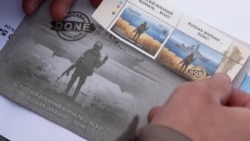On June 30, Russia announced that it was voluntarily withdrawing its troops from Ukraine’s Snake Island in the Black Sea.
Russia’s Defense Ministry said it had fulfilled its mission there and implied that pulling out would somehow help get stockpiled Ukrainian grain out to feed starving corners of the world.
“On June 30, as a gesture of goodwill, the Armed Forces of the Russian Federation completed their assigned tasks on Snake Island and withdrew the garrison stationed there.
“Thus, it has been demonstrated to the world community that the Russian Federation does not interfere with the efforts of the U.N. to organize a humanitarian corridor for the export of agricultural products from the territory of Ukraine.”
That’s misleading. In fact, Ukraine forces had hammered the tiny, exposed outpost with repeated bombardments and released photos and video to show the attacks.
Before the pullout, Russian officials and sympathizers had repeatedly played up the importance of holding Snake Island, which they described as well-defended. They said it never would be handed to Ukraine.
Russia took the island, on February 24, the first day of its all-out invasion of Ukraine. The island is 25 miles south of the Ukrainian port city of Odesa.
Aleksandr Dugin, the Russian ultra-nationalist intellectual called President Vladimir “Putin's brain,” wrote in a vKontakte post: “Ours have taken Snake Island. Snake Island in the Black Sea plays a crucial role in sacred geography … Whoever controls the Snake controls the course of world history.”
On May 10, the Russian state media outlet RT reported: “An island during hostilities is almost always a foothold. If we mean Snake Island, this is the key to Odesa. Confirmation of this is the great attention paid to it by the Russian command on the very first day of a special military operation.”
On June 22, Yuri Shvytkin, deputy chairman of the defense committee of the State Duma, the lower house of Russia’s parliament, called Snake Island the main strategic objective in the Black Sea.
“Firstly, it is about 35 kilometers from the coast of the Odesa region and a little over 100 [kilometers] from Odesa. Secondly, there it’s not a matter of just a single ship; here we are talking about Bulgaria, Romania, Poland, and so on, who will pass by Snake Island,” he said.
“This sea route is under the control of those forces located on the island.”
On June 28, Andrey Gurulyov, a Duma deputy and retired Russian general, said on Rossiya-1 state TV: “Snake Island allows us to control the waters of the ports of Odesa and Mykolaiv. This is a key piece of territory that blocks the Black Sea ports of Ukraine.”
On April 14, the Ukrainian armed forces sank the Russian guided-missile cruiser Moskva, the Black Sea fleet flagship, near Snake Island, in a missile attack. This forced Russia to withdraw the ships defending the island, and regular Ukrainian attacks followed.
Ukraine’s southern ground command announced the pullout on June 30, saying the island was “hastily evacuated” amid explosions and fire.
Within 24 hours following its "humanitarian" withdrawal from Snake Island Russia bombed residential areas in Odesa, killing at least 19 civilians and wounding dozens more.
Snake Island became widely known after Ukrainian defenders, confronted by the Moskva, reportedly responded, “Russian warship, go f--- yourself.” Later, a Ukrainian postage stamp commemorated the incident.






